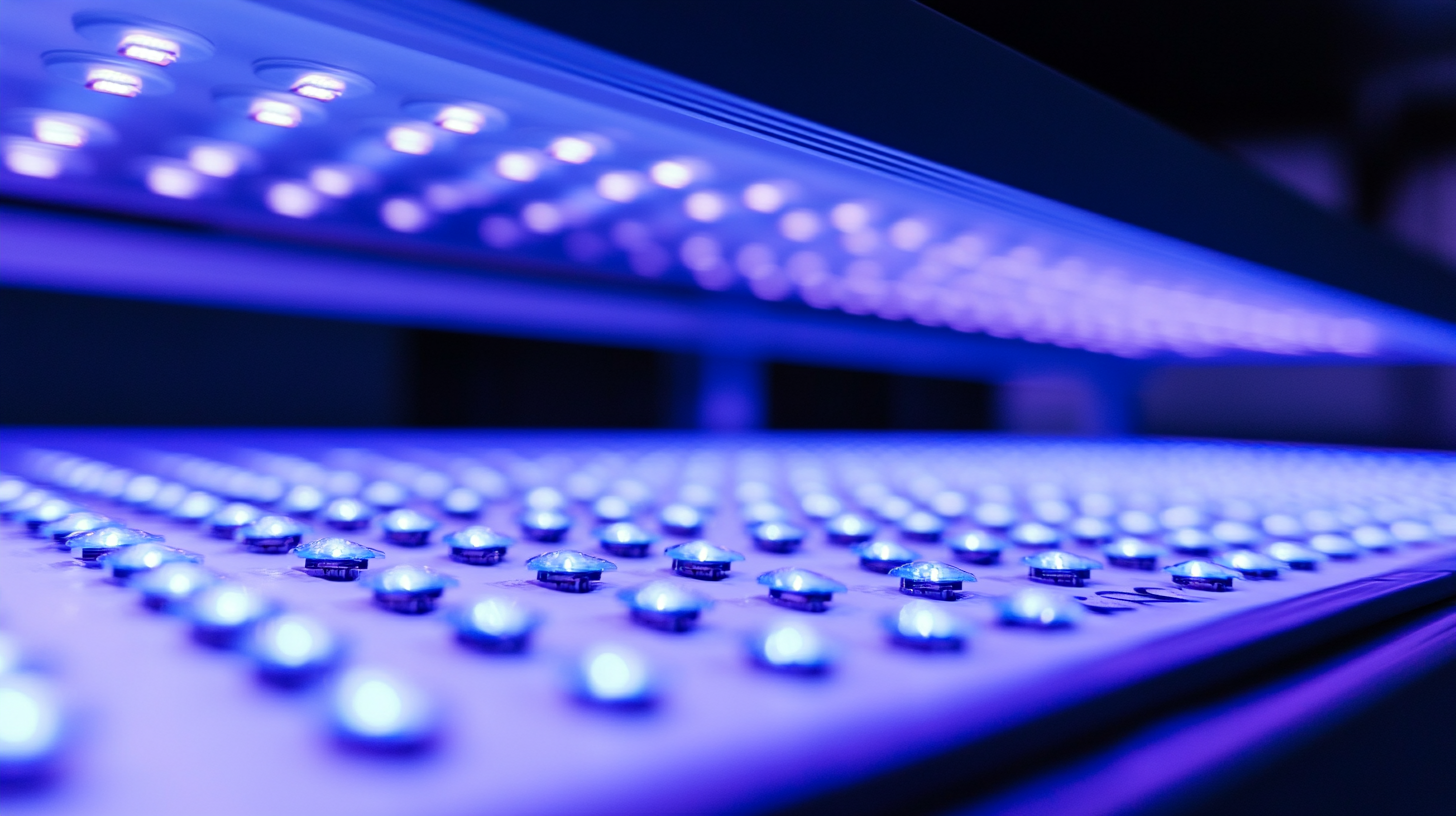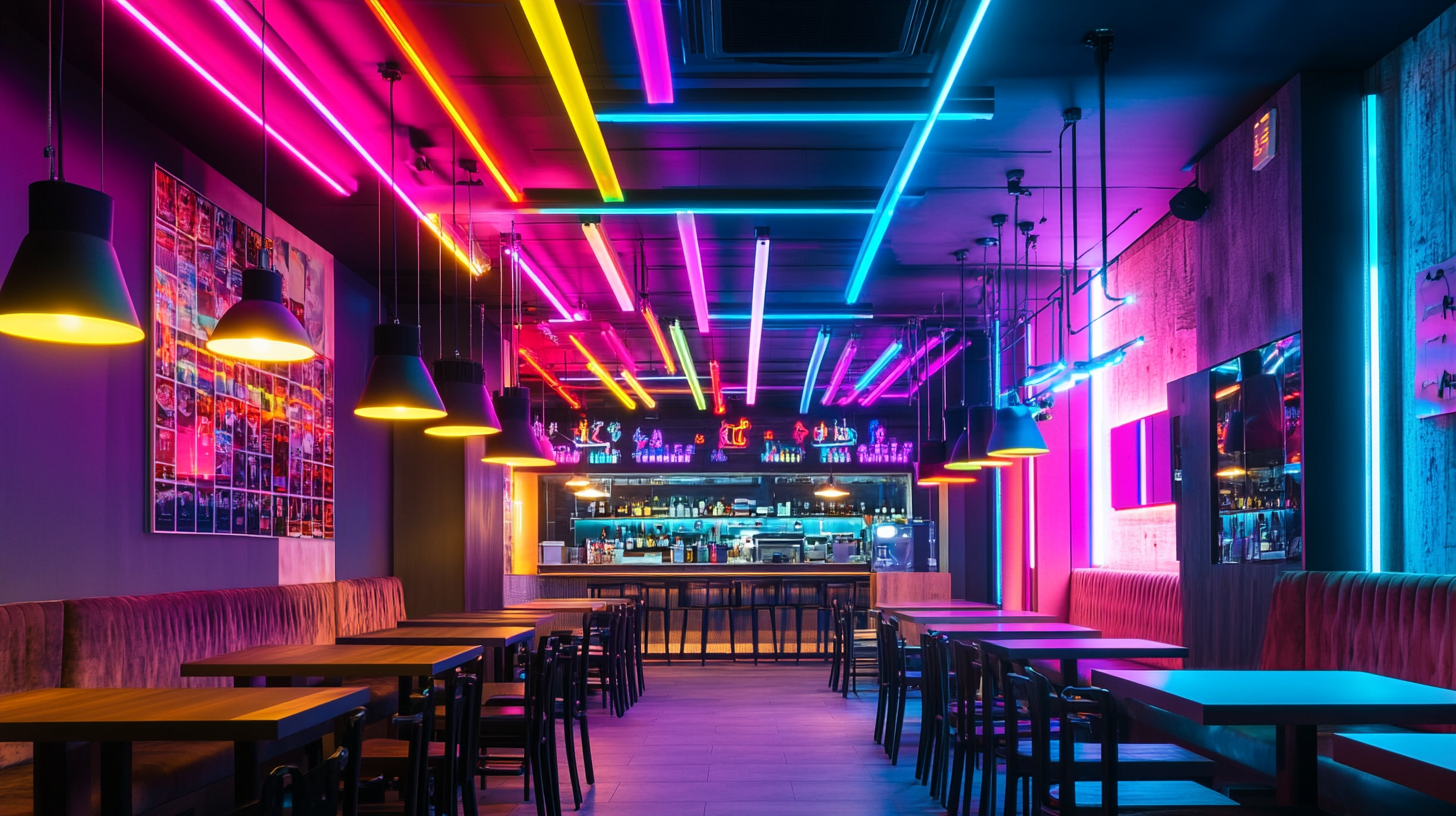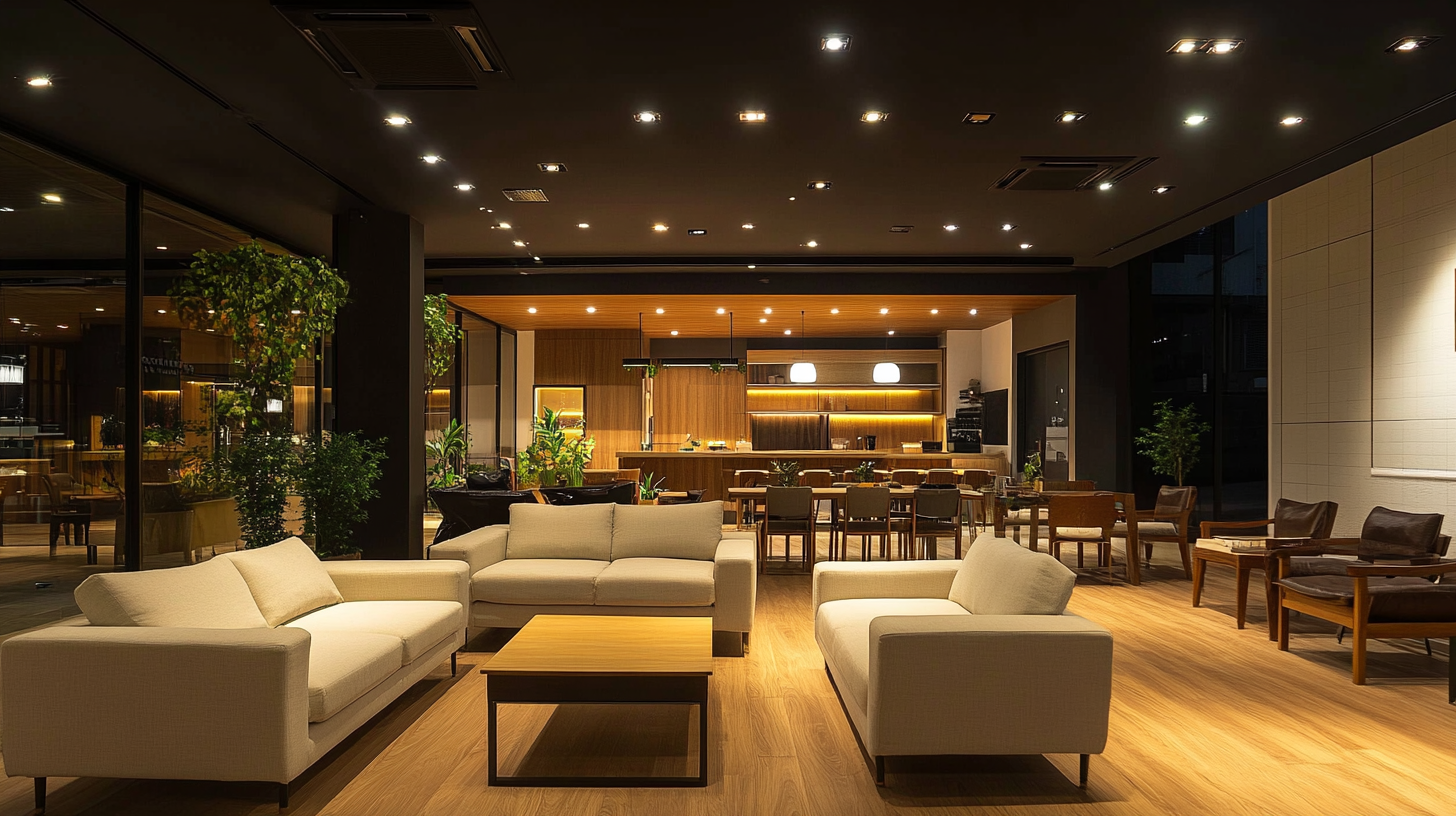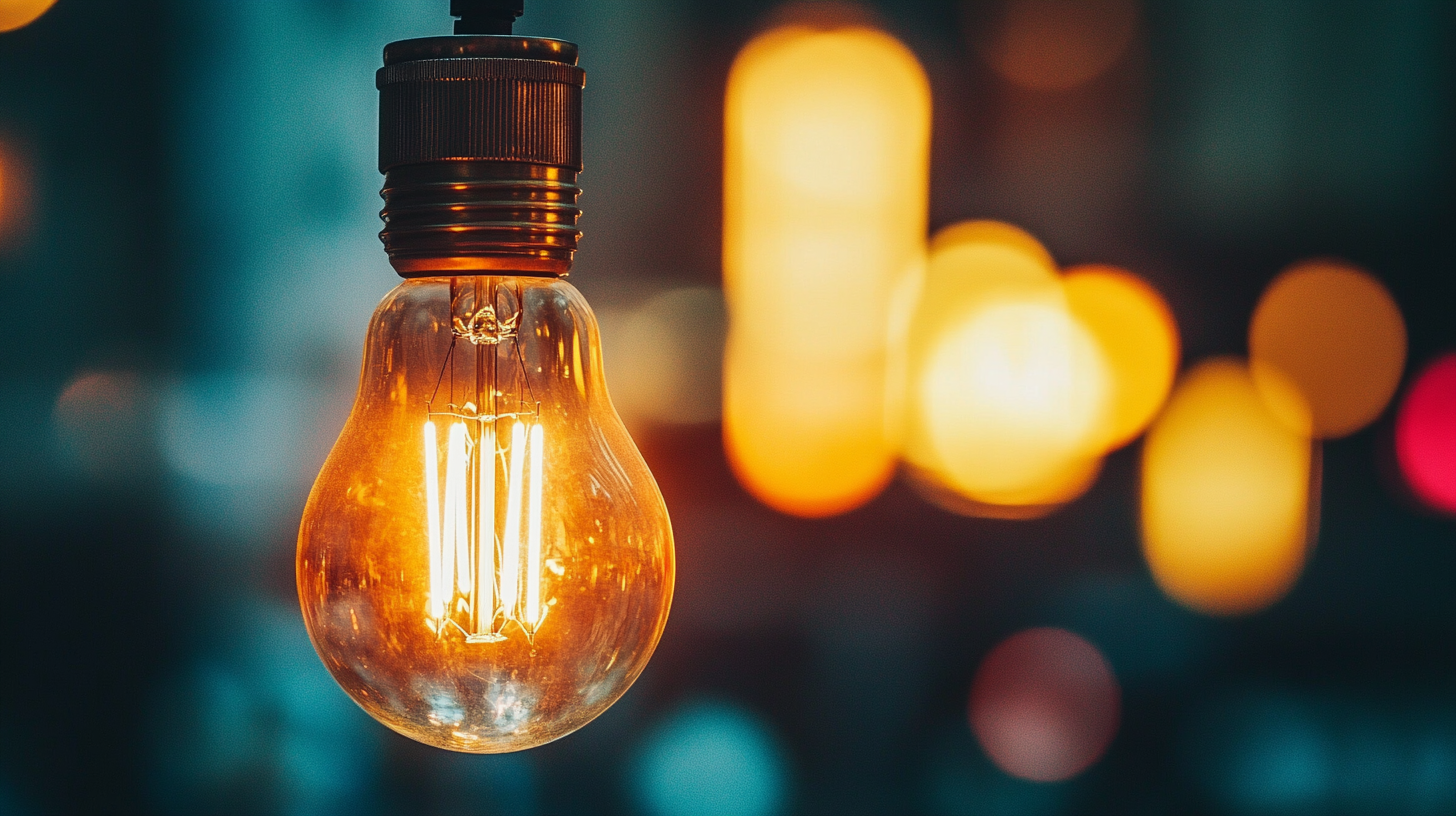7 Essential Factors to Consider When Choosing Led Light Fixtures for Your Business
In today's rapidly evolving commercial landscape, the choice of lighting can significantly impact both operational efficiency and aesthetic appeal. According to a report by the Department of Energy, LED light fixtures are not only more energy-efficient but also offer a longer lifespan compared to traditional lighting solutions, potentially reducing lighting energy costs by up to 75%. This shift towards LED technology is driven by businesses seeking ways to enhance sustainability while also improving their bottom line. As organizations strive to create more productive environments, the decision regarding which LED light fixtures to install becomes increasingly crucial.
Selecting the right LED light fixtures involves more than simply picking a product off the shelf; it requires a careful evaluation of various factors that align with business goals. Research indicates that well-designed LED lighting can positively influence employee productivity and customer experience. Additionally, a survey conducted by the American Institute of Architects reveals that over 60% of design professionals believe lighting plays a vital role in the overall ambiance of a commercial space. Therefore, understanding the essential factors when choosing LED light fixtures is pivotal for any business looking to enhance its operational success and aesthetic appeal.

Understanding the Importance of LED Quality for Business Operations
When selecting LED light fixtures for your business, understanding the quality of the LEDs you choose is paramount. High-quality LED lighting not only enhances the aesthetic appeal of your space but also significantly impacts operational efficiency. Poor-quality LEDs can lead to increased energy consumption, higher maintenance costs, and even safety hazards. Therefore, investing in superior LED products is crucial for businesses looking to maintain a sustainable operation while minimizing unnecessary expenses. Moreover, many companies today prioritize responsible business practices, similar to the commitments made by Pfizer. Just as Pfizer emphasizes its impact through responsible sourcing and sustainable initiatives, businesses should carefully consider the ethical implications of their lighting choices. By selecting LED fixtures from manufacturers that focus on quality and environmental impact, businesses can contribute to a healthier planet while reaping the benefits of energy efficiency. This alignment of values can enhance brand reputation and resonate well with environmentally conscious customers, ultimately driving long-term success. In conclusion, prioritizing LED quality not only improves business operations but also reflects a commitment to sustainability and social responsibility. As companies navigate their growth strategies, the choice of lighting can serve as a strong indicator of their dedication to both their bottom line and the broader community.

Evaluating Different LED Light Fixtures for Cost-Effectiveness
When evaluating different LED light fixtures for cost-effectiveness, businesses must first consider the long-term savings associated with energy efficiency. Data from the U.S. Department of Energy indicates that LED lighting can be up to 80% more efficient than traditional incandescent bulbs, translating to significant reductions in energy costs over time. For instance, switching to LED fixtures in commercial settings can lead to energy savings that range from $200 to $1,000 annually per fixture, depending on usage and local energy rates.
Additionally, the longevity of LED fixtures contributes to their cost-effectiveness. According to a report by the Lighting Research Center, most LED fixtures have an operational lifespan of 25,000 to 50,000 hours, compared to just 1,000 hours for incandescent bulbs. This durability reduces the frequency and associated costs of replacements and maintenance—assets crucial for budget-conscious businesses.
It's also important to consider the initial investment against these savings. Although LED fixtures often come with a higher upfront cost, the long-term return on investment can be substantial. A study from the National Renewable Energy Laboratory found that even with higher initial outlays, the total lifecycle costs of LED lighting can be lower than traditional options due to reduced electricity use and extended lifespans. Thus, businesses need to evaluate both the upfront costs and the future savings to make informed decisions about their lighting needs.

Assessing Energy Efficiency Ratings and Their Impact on Savings
When selecting LED light fixtures for your business, assessing energy efficiency ratings is crucial. These ratings provide valuable insights into how much electricity the fixtures consume and how much light they produce. Understanding these metrics allows businesses to make informed decisions that can significantly impact their overall energy costs. For example, fixtures with higher efficacy ratings deliver more lumens per watt, meaning they provide greater illumination while using less energy. This not only translates into lower electricity bills but also contributes to a more sustainable business model.
Energy Star certification and other efficiency labels serve as benchmarks for evaluating LED fixtures. Choosing lights that meet these certifications can lead to substantial savings over time. Moreover, some utility companies offer rebates and incentives for energy-efficient lighting upgrades, which can further reduce the initial investment costs for businesses. By prioritizing energy efficiency in lighting selections, businesses can improve their bottom line while also promoting environmental stewardship. This holistic approach enhances not only operational costs but also the overall aesthetic and productivity of the work environment.

Determining the Best Color Temperature for Your Business Environment
Choosing the right color temperature for your LED light fixtures is crucial for creating an optimal business environment. Color temperature, measured in Kelvin (K), influences not just the aesthetic appeal but also the productivity and mood of employees and customers. For instance, cooler temperatures, typically ranging from 4000K to 5000K, emit a crisp, bright light that enhances focus and alertness, making them ideal for workspaces such as offices or manufacturing facilities. This type of lighting simulates daylight, which can significantly improve concentration and reduce eye strain during long working hours.
On the other hand, warmer color temperatures, between 2700K and 3000K, provide a cozy, inviting atmosphere, perfect for spaces where relaxation and comfort are paramount, like cafes and restaurants. Warmer tones can enhance the ambiance, making customers feel more at ease, which may encourage them to linger longer and ultimately increase sales. Additionally, understanding the specific needs of your business environment can help you find the right balance – choosing a color temperature that matches the intended use of the space and aligns with your brand identity can directly influence customer satisfaction and employee well-being.
Furthermore, it is worth considering the context of your business when making this decision. Certain retail environments might benefit from a blend of color temperatures to create distinct zones within the same space, guiding customers through different experiences. By strategically selecting the appropriate LED fixtures with the correct color temperature, you not only enhance the overall aesthetic but also contribute to a functional environment that supports your business goals.
Considering Installation and Maintenance Requirements for Longevity
When selecting LED light fixtures for your business, understanding installation and maintenance requirements is crucial for ensuring longevity and optimal performance. According to the U.S. Department of Energy, LED lights can last up to 25 times longer than traditional incandescent bulbs, but this longevity is contingent on proper installation and maintenance. Ensuring that fixtures are installed at the correct height and angle can significantly impact the distribution of light and energy efficiency, maximizing the benefits of the investment.
Moreover, regular maintenance is key to maintaining the performance of LED systems. A study by the Illuminating Engineering Society found that routine cleaning of fixtures can enhance light output by up to 30%, as dust and grime accumulation can diminish efficacy over time. It is also essential to consider the environment where the fixtures will be installed. In areas with high humidity or extreme temperatures, selecting fixtures specifically designed for those conditions can prevent premature failure. For instance, fixtures with proper ratings for weather resistance can lead to lower maintenance costs and increased lifespan.
Additionally, the initial installation process can affect long-term functionality. A report from the National Institute of Standards and Technology indicates that poorly installed lighting systems can result in 20% higher energy consumption. This is due to misalignment and inefficient operation, which can also lead to increased maintenance frequency. Choosing fixtures that allow for easy access for future repairs and bulb replacements can further enhance the longevity of your lighting investment, ensuring that your business remains well-lit and cost-effective in the long run.


